8 Oct 2025
Excitement builds. After breakfast, I will officially board a bullet train. I watched them zip by while at the Railroad Museum. Now I get to ride one from Kyoto to Himeji.
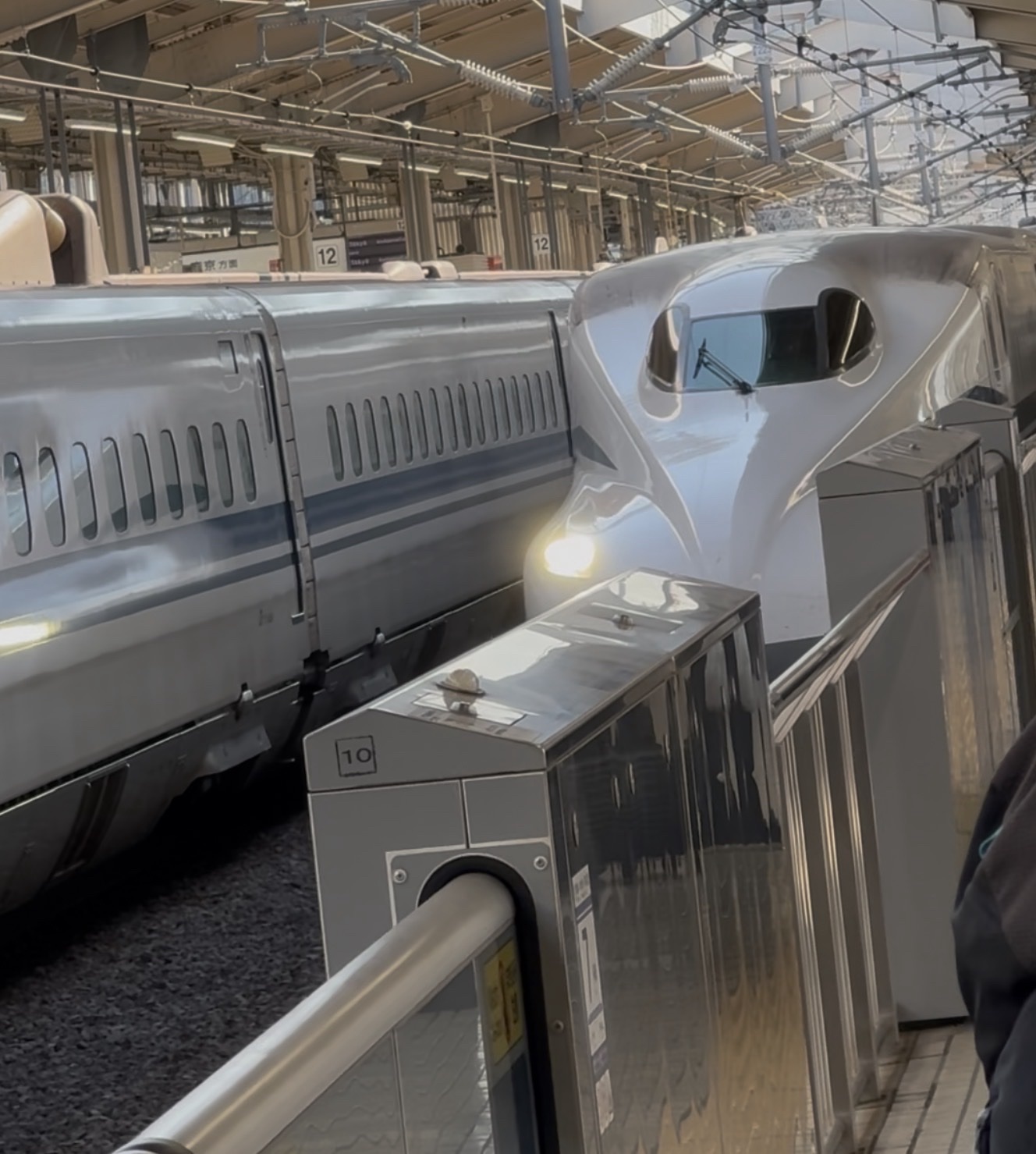
Even Faster Than a Speeding Bullet
The Shinkansen, Japan’s high-speed bullet trains, began service in 1964, just before the Tokyo Olympics. They quickly became a symbol of modern Japan. Reaching speeds of over 200 miles per hour, the train is renowned for its punctuality, comfort, and safety. Delays most often measured in seconds. Even for that small delay, hardly noticeable on a watch, the staff will profusely apologize to each passenger. The network connects major Japanese cities through lines such as the Tokaido between Tokyo and Osaka, with its stop in Kyoto.
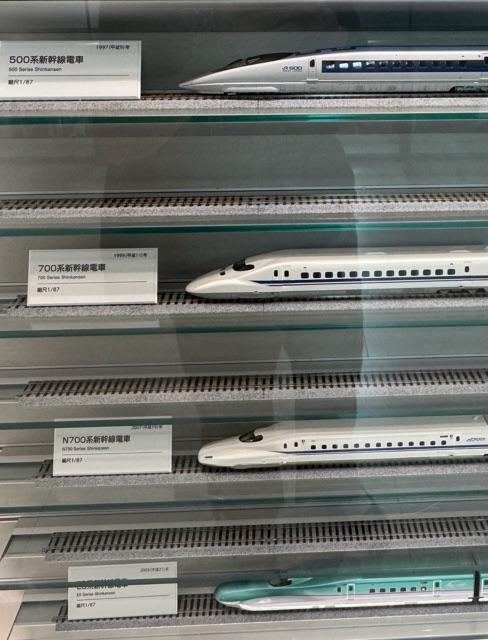
Looking ahead, Japan is developing the Chūō Shinkansen, which will feature SCMaglev (superconducting magnetic levitation) technology, expected to cut travel time between Tokyo and Nagoya to about 40 minutes and achieve even higher speeds than today’s bullet trains. From its early reputation as faster than a speeding bullet to its role as a model of efficiency, the Shinkansen continues to evolve as one of the world’s most advanced rail systems.
Future plans include a new SCMaglev line along the Chūō Shinkansen route, the track line I followed alongside from Kanazawa to Kyoto. I read this train will be even faster than a speeding bullet!
The line eventually will connect Tokyo and Osaka in 67 minutes, running at a maximum 314 mph. About 90% of the 178-mile track to Nagoya will be tunnels. The Chuo Shinkansen represents the culmination of Japanese maglev development since the 1970s, a government-funded project initiated by Japan Airlines and the former Japanese National Railways (now the JR Central). Begun in 2011, expected cost comes at about 82 billion USD with completion expected about 2034 – 2037.
Riding the Rails at Lightning Speed
Only 78 miles between Kyoto and Himeji – our Tokaido Shinkansen takes just 43 minutes. We fly through the suburbs, make two brief stops, and zip around Osaka Bay.
Inside the Shinkansen, the atmosphere feels more like an airplane than a train, but with more space and comfort. Cars are wide and clean, with large reclining seats arranged in rows of two and three, depending on the class. There is generous legroom, overhead storage for luggage, electrical plugs, tray tables, and large windows that frame passing scenery.
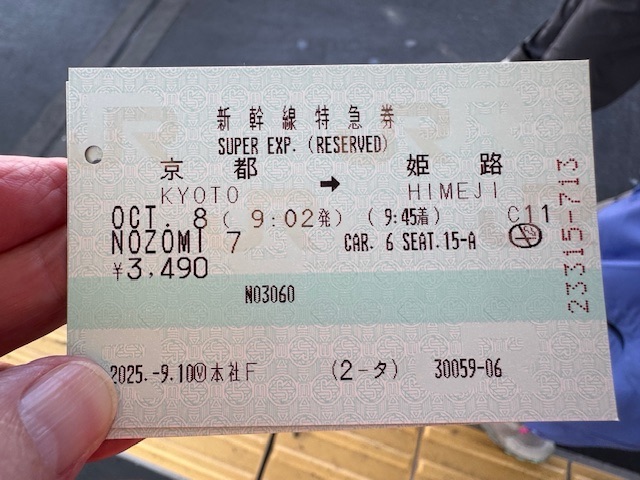
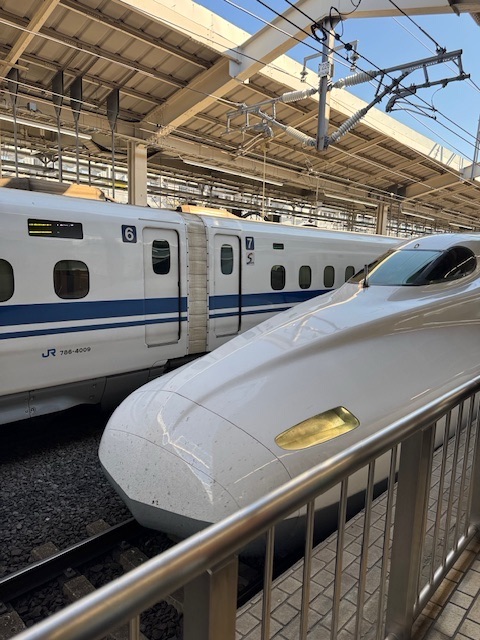
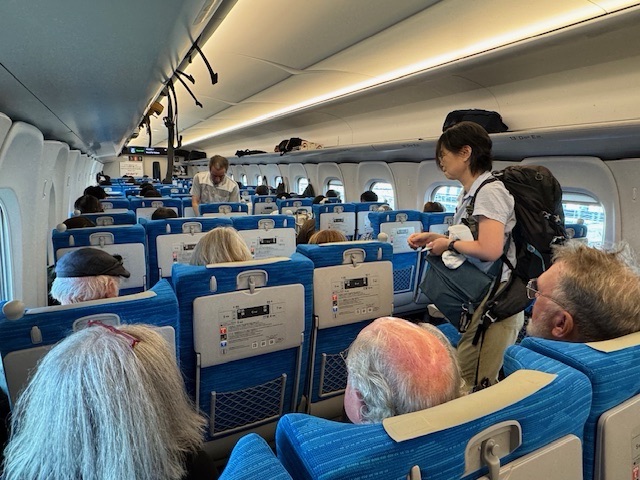
The Gran (luxury) class offers leather seating, footrests, and personal service, sort of comparable to international first class flights. Green Car or first class has wide seats, a nice recline, extra legroom, and quiet surroundings. Think business/Polaris class.
Our Ordinary class proves very comfortable, with orderly seating and spotless interiors. Our short ride left little need for a restroom, but I hear they are equally as spotless. I would expect no less from the Japanese. The ride itself is smooth and quiet, even at top speed. Some trains have vending machines.
Our train arrives into Himeji Station in 43 minutes. We arrive on the dot. No apologies needed.
Himeji Castle
Himeji Castle was nick-named White Heron Castle because of its white plaster walls. Combined with the elegant curves of the multiple layered roofs, the whole structure looks light and airy, almost as if it could take wing. Many say it resembles a heron taking flight. Sitting high above a massive stone base, it commands a view over the city and distant mountains.
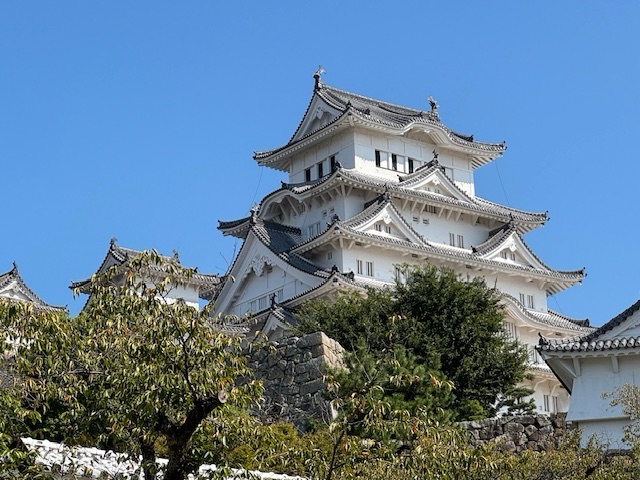
Its history stretches back to 1333, when a fort was first constructed on the site by Akamatsu Norimura, a local samurai lord. Over the centuries, the fortress expanded, reaching its present grand form in the early 1600s under the rule of Ikeda Terumasa. He oversaw a massive reconstruction that created the multi-layered main keep and extensive defensive complex. It became Japan’s first UNESCO World Heritage Site in 1993.
The castle represents a consummate example of Japanese feudal architecture, combining beauty with sophisticated military design. Its maze-like pathways, hidden gates, and layered defenses were intended to confuse and slow attackers.
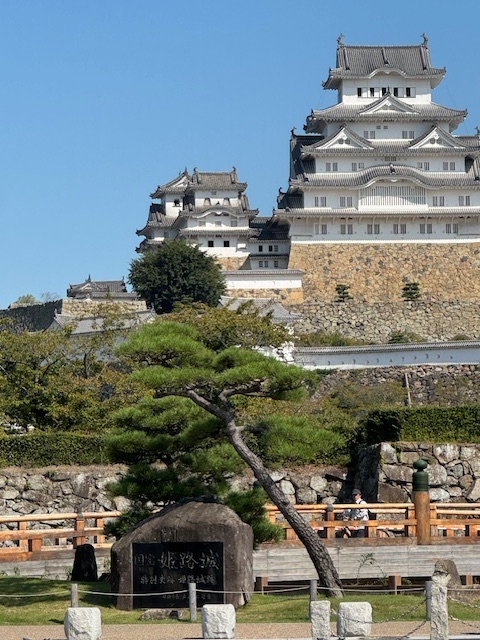
Its towering central keep symbolized the power of its lords. Despite its military origins, Himeji Castle never suffered destruction in battle, and it survived the bombings of World War II and even the Great Hanshin Earthquake (6.9) in 1995.
A Peek Inside
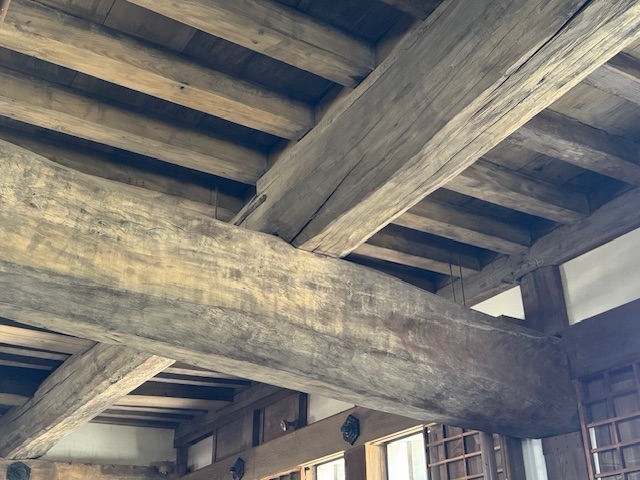
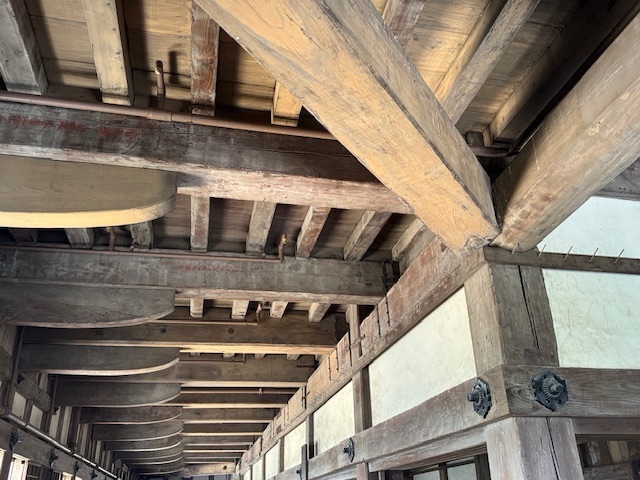
The interior of Himeji Castle, as opposed to its elegant white exterior, feels austere and down-to-earth. But simple it’s not. The construction is precise, thought-out for effectiveness, and impressive for its craftsmanship.
Rather than ornate decoration, the inside is practical, wooden, and defensive in design. Floors are made of dark, polished wood, with steep, narrow staircases connecting the multiple levels of the main keep. The walls have small windows and openings for archers and gunmen, as well as hidden spaces for defense.
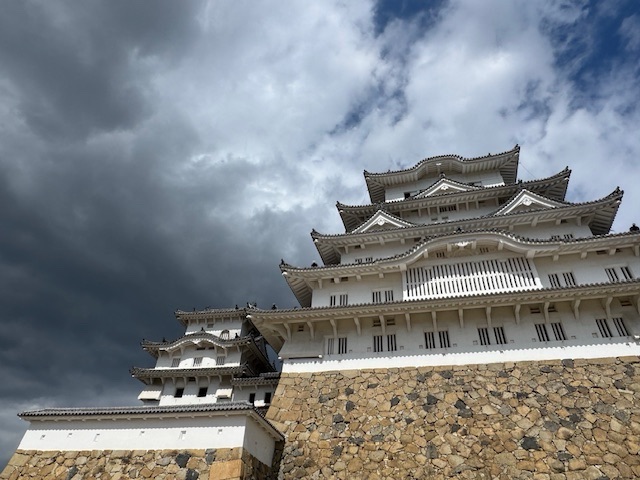
There are no grand halls or lavish furnishings. Rooms are relatively bare, with exposed wooden beams and tatami flooring only in some areas. The central keep (tenshu) rises six stories, but from the outside it appears to have five levels due to clever designing. Exhibits of weapons, armor, and artifacts line the walls and spaces that once served as storerooms, watch posts, and strongholds in case of siege.
Pond Garden with Small Artificial Hills
This oddly named garden lies just east of castle hill. Built in 1992, it celebrates the city’s 100th anniversary. The garden is actually a collection of nine distinct Edo-style gardens, featuring ponds, waterfalls, bamboo groves, and teahouses. The Pond Garden with Small Artificial Hills is one of these nine, designed to recreate the elegant landscape gardens once found around samurai residences, with small mounds and carefully placed stones representing mountains and islands.
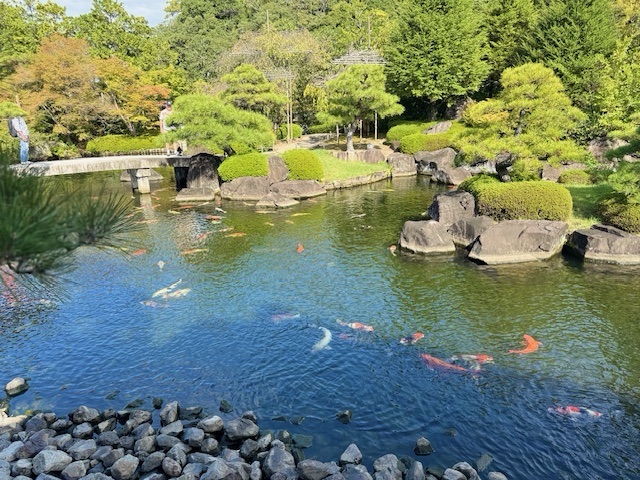
As one winds along its main path, the bamboo garden is cool and relaxing as is the stream garden. Important as today it a torturing 84° with humidity and a brutal sun. However, the photos snap at the pond garden with giant koi and stone bridge.
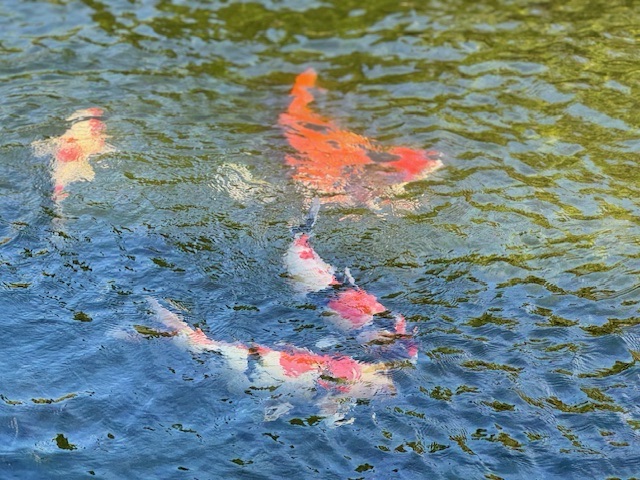
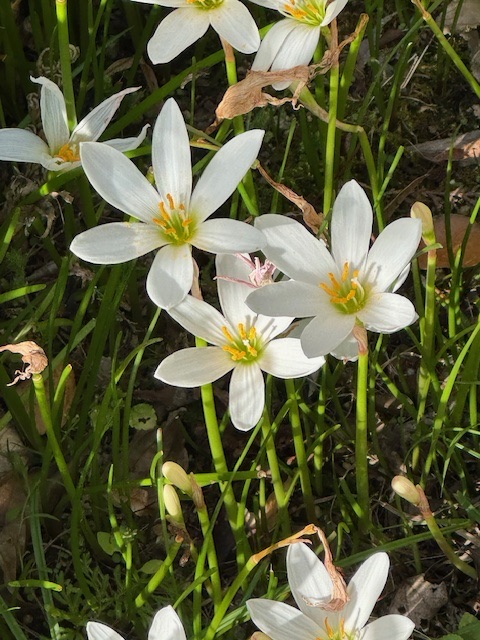
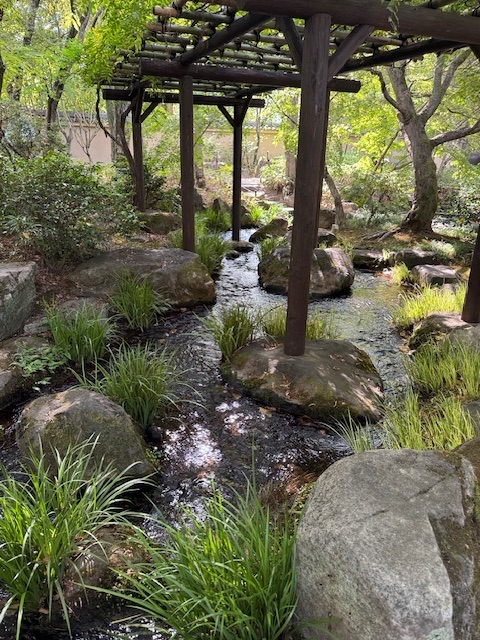
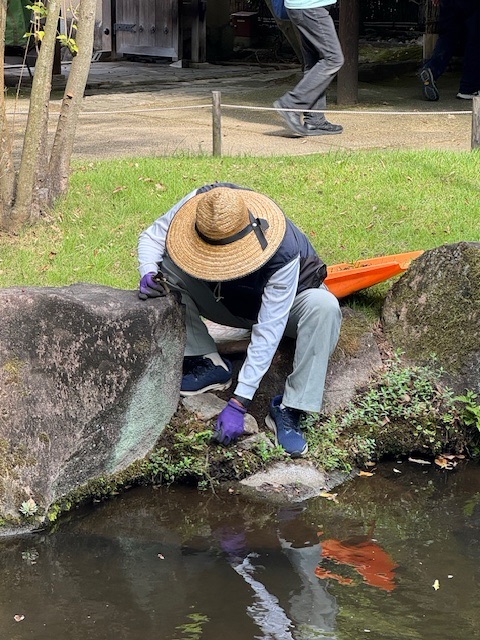
Not Just a Castle
The castle sits centered inside Himeyama Park surrounded by a moat and high walls. The park is also home to the city zoo, shrines, gardens, and museums.
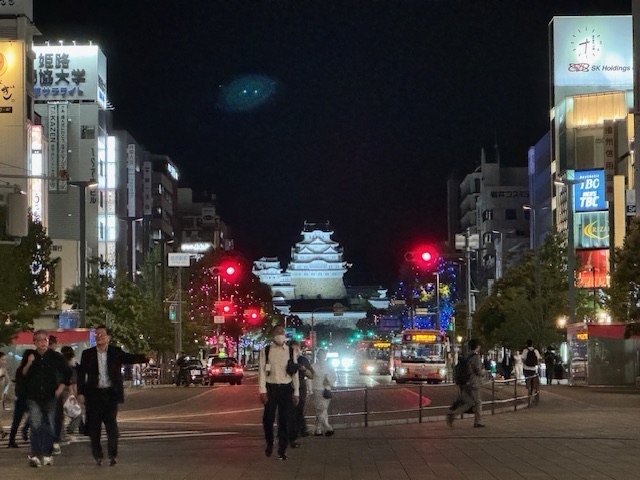
At night, dramatic lighting illuminates the white plaster walls, emphasizing the sweeping curves of the roofs and its elegant, layered structure. The lighting carefully highlights the castle’s architectural beauty while preserving a sense of mystery, making it look like a white heron gliding above the city even after dark. Its prominent hilltop location means that even from a distance, the gleaming white walls stand out against the cityscape.
Dinner at Sainte vierge maison
When told we would dine at a French restaurant, understandably there was skepticism. After all, the Italian and chicken bbq restaurants were shills for the raw fish, tempura and miso soup of traditional Japanese dining.
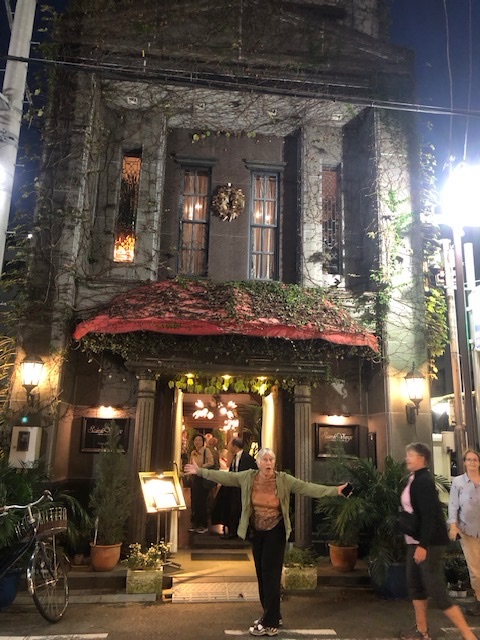

Surprise! We dined at an actual French restaurant. Everything from presentation to entrée and dessert were wonderfully prepared and enjoyed. Our host couldn’t have been more attentive.
Overnight in Himeji
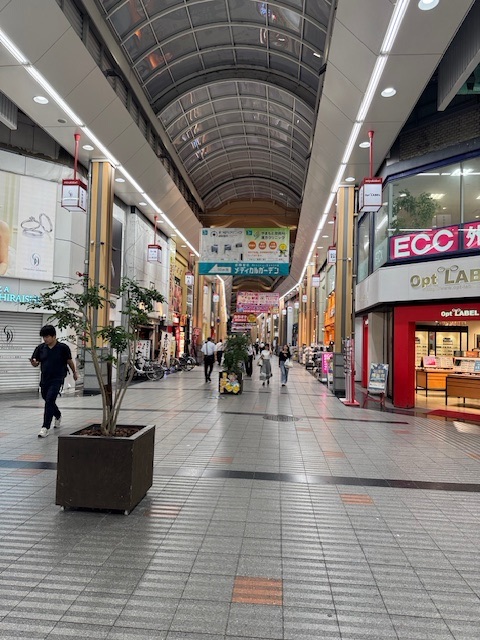
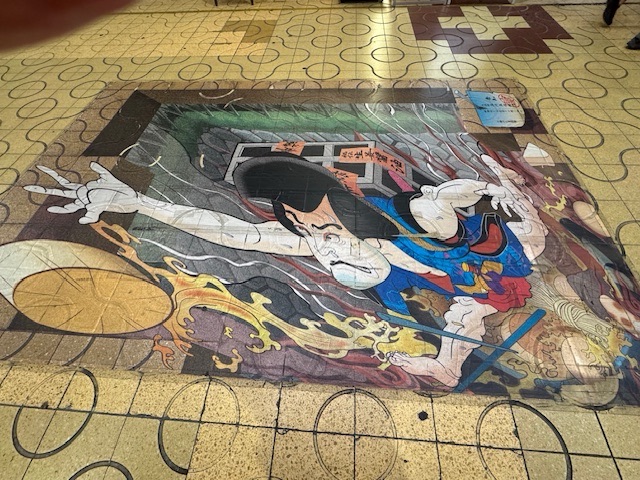
We walk back to our hotel through one of the best covered shopping centers I have seen. Containing everything imaginable from shopping to karaoke bars to whimsical art, it appears to be the place to be. As does Himeji itself.
We lodge at the modern Hotel Nikko Himeji located directly across from the railroad station. I can watch a Shinkansen arrive every few minutes. The hotel is as one would expect: welcoming, comfortable and sparkling clean.
Luggage awaits big packers in Nara day after tomorrow. I am glad I travel light and carry my own. My bag is currently a few clothing items less and a couple pounds lighter. Briefly, I consider what items will remain behind. No longer facing cooler mountain temperatures, certainly heavier items can stay.

I really like Himeji. Lots of bright neon lights, big city energy. A place of street art and live piano music in the train station. The city has a lively, youthful vibe. And possibly the only place in all of Japan to meet a cat.
0 Comments